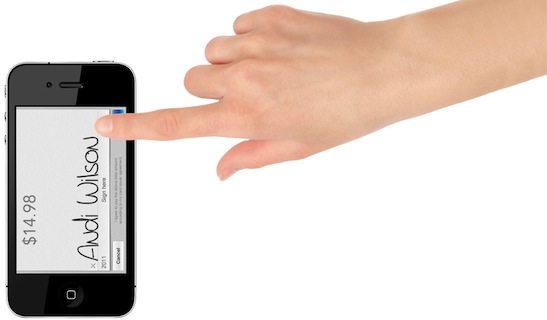Use of phone apps skyrockets 45 percent in six-month span, but how safe are they?
The smart phone is becoming to banking what the knife has become to bread: It’s changing the way we consume.

“Mobile banking has had the biggest impact on financial institutions since the introduction of ATMs,” says Paul Stull, senior vice president of strategy and brand at Arizona State Credit Union, the first credit union to introduce mobile banking in Arizona.”The convenience of being able to use a mobile device to manage funds, track balances and pay bills is a huge advancement in convenience and time savings for consumers.”
According to comScore, a leader in measuring the impact of the digital world, the number of people using mobile banking applications on their smart phones jumped an astounding 45 percent from December 2010 to June 2011. Nearly 14 percent of the total U.S. mobile audience accessed mobile banking services in June 2011, an increase of 21 percent from the fourth quarter of 2010.

“New functionality, such as person-to-person payments and mobile check deposits, continue to gain traction, accelerating user adoption,” says Dan Stewart, president for Mutual of Omaha Bank in Arizona. “Banks that ignore the trend will find themselves missing what is fast becoming a standard bank offering.”
Not many banks are ignoring the trend. In a recent survey of the top 25 financial institutions in the United States, Javelin Strategy & Research found that 23 of those 25 institutions offer some sort of mobile-banking service SMS/text, downloadable applications, WAP/browser, or a combination of all three, known as a “triple play”. Thats an improvement from 2009, says Mary Monahan, research director at Javelin, when less than 50 percent of the same banking institutions played active roles in mobile space.
“Mobile banking is a must-have now,” says Monahan.
Wells Fargo is one of the institutions that blazed the mobile-banking trail and offers the triple play.
 “Wells Fargo launched its mobile channel in 2007 by listening to our customers,” says Brian Pearce, senior vice president and head of the Retail Mobile Channel at Wells Fargo’s Internet Services Group. “They told us that they wanted easy and convenient access to their balances, transfer capabilities and the ability to pay a bill while on the go. They also told us that they wanted to be able to access their information regardless of their phone model and carrier plan. To meet these needs, we offer a triple play mobile web, Apps for Android, iPhone, Blackberry and Palm, and text banking.”
“Wells Fargo launched its mobile channel in 2007 by listening to our customers,” says Brian Pearce, senior vice president and head of the Retail Mobile Channel at Wells Fargo’s Internet Services Group. “They told us that they wanted easy and convenient access to their balances, transfer capabilities and the ability to pay a bill while on the go. They also told us that they wanted to be able to access their information regardless of their phone model and carrier plan. To meet these needs, we offer a triple play mobile web, Apps for Android, iPhone, Blackberry and Palm, and text banking.”
And Wells Fargo continues to improve the ease of use and is adding new bells and whistles to make banking easier.
“We’ve just recently enhanced the design of our mobile experience with a simplified navigation and streamlined screen designs,” Pearce says. “We also added a GPS feature for our wf.com ATM locator and new commands and enrollment options for our text banking application.”
Banks are finding that mobile banking is good for the bottom line.
 “Mobile banking adds to customer acquisition and retention, reduces call volume to the call center, and takes the convenience of Web banking one step further,” says Craig Doyle, Arizona market president of Comerica Bank, which has launched mobile banking apps for the iPhone, BlackBerry and Android. “This technology also forces the industry to focus more on the customer and carefully evaluate what products and services we can offer to better serve them.”
“Mobile banking adds to customer acquisition and retention, reduces call volume to the call center, and takes the convenience of Web banking one step further,” says Craig Doyle, Arizona market president of Comerica Bank, which has launched mobile banking apps for the iPhone, BlackBerry and Android. “This technology also forces the industry to focus more on the customer and carefully evaluate what products and services we can offer to better serve them.”
While smart phone users are the biggest users of mobile banking, the exploding popularity of mobile tablets like the iPad is expected to alter the mobile banking landscape even further, experts say.
“The tablet is going to be a game changer,” Monahan says. “Banks have to be ready.”
Apps for tablets will require some thought, since consumers spend more time browsing on mobile tablets than they do on mobile phones, Monahan says. “Banks will have to have deeper dives, and its going to be key for banks to have a tablet-specific app.”
Even as the use of mobile banking skyrockets, there is one issue that is keeping it from reaching a fever pitch.
“The main reason consumers dont move to mobile banking is because of security concerns,” Monahan says. “Consumers want to know that their mobile interactions and transactions are encrypted, and they want some assurance that they will be reimbursed for losses associated with a mobile-banking breach. Banks need to educate consumers about what they offer and how they are protecting the mobile channel.”
Educating consumers is something that Comerica said is vital to growing its mobile banking channel.
“Comerica always has security in mind and is constantly evaluating better ways to protect our customers,” Doyle says. “We encourage our customers to take the proper precautions to protect themselves. We feature information about good security practices on our Comerica.com website and our mobile banking microsite so our customers can be properly educated and protect themselves.”
To help ease its customers security concerns, Monahan says banks should at least do these three things:
Post mobile banking security guarantees on their websites. Guarantees should be prominent, on the homepage, so consumers can quickly find them.
Banking institutions offering mobile banking through downloadable apps should have the ability to remotely deactivate apps that could be infected or contain malicious code.
Every institution should spearhead a strong consumer education campaign that educates consumers about safe mobile-banking practices, while also informing them about mobile offers and services provided by their banks or credit unions.
Arizonas banking leaders say those security concerns are not going unnoticed.
“All mobile technology used by Arizona State Credit Union complies with federal financial institution regulations requiring the use of multi-factor authentication technology,” Stull says. “In addition, the Credit Union will be adding new security improvements during 2012 that will use virtual intelligence to learn user behavior and detect variances in usage that may indicate unauthorized activity.”
Bankers point out that mobile banking can actually be a great tool to use to keep your money secure because you have 24-hour access to your financial information.
“We feel that the ‘anytime, anywhere’ nature of mobile banking gives customers a great tool to monitor their accounts and stay in control of their money,” Pearce says.
5 Ways To Protect Yourself
1. Set the phone to require a password to power on the handset or awake it from sleep mode.
2. Whether you’re using the mobile Web or a mobile client, don’t let it automatically log you in to your bank account. Otherwise, if your phone is lost or stolen, someone will have free access to your money.
3. Avoid sharing your password, account number, PIN, answers to secret questions or other such information. Don’t save this information anywhere on your handset.
4. Immediately tell your bank or mobile operator if you lose your phone.
5. Review account statements. If you do notice any unusual transactions, call your bank immediately and dispute the transactions.




